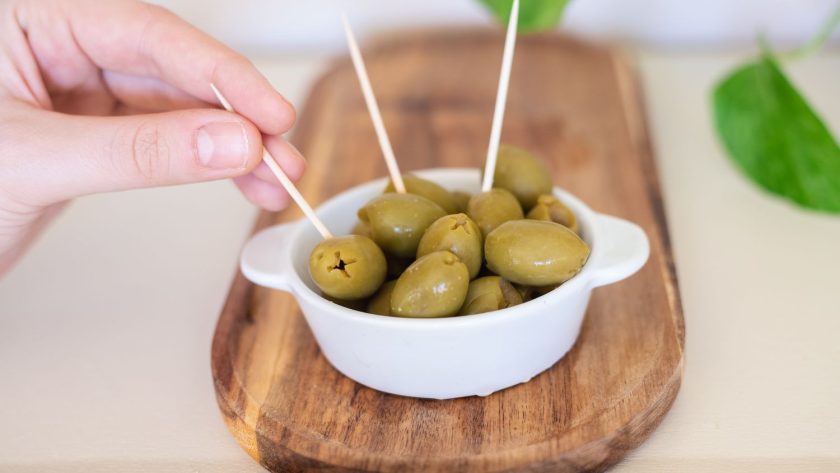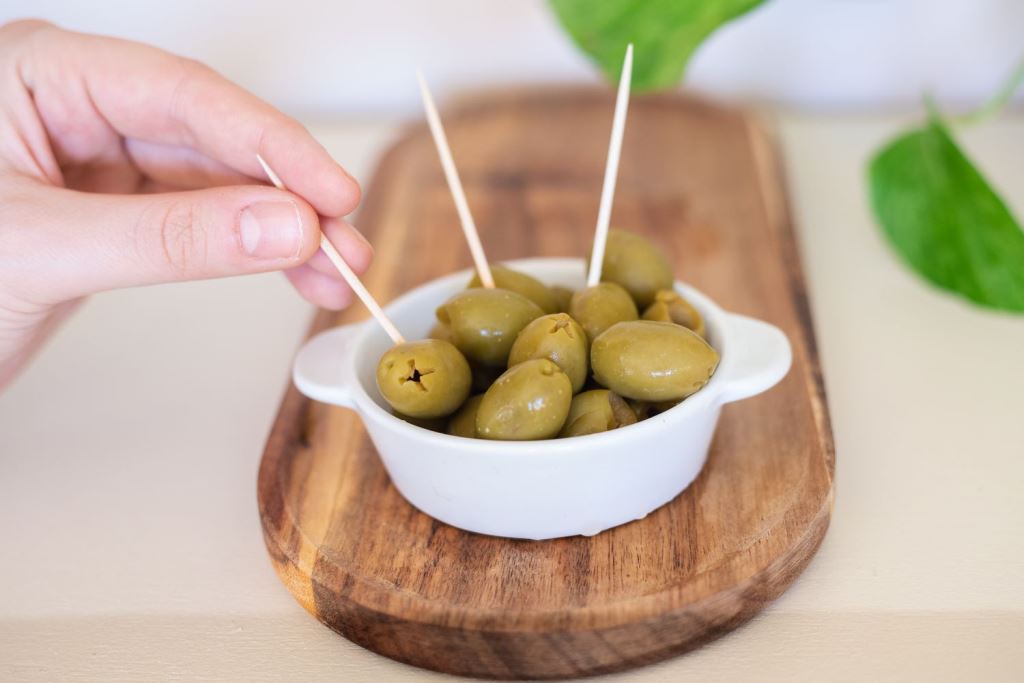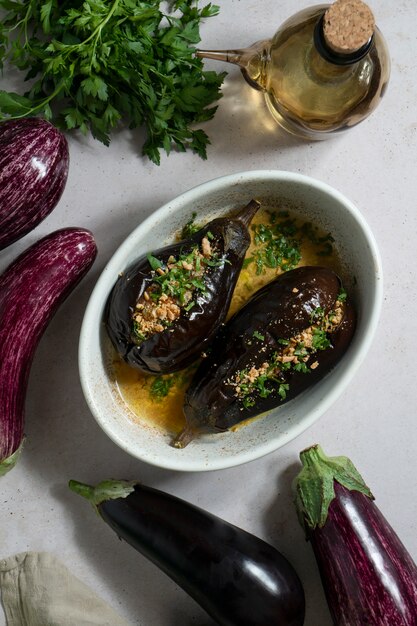Are Olives Considered a Fruit? The Surprising Truth Behind the Classification of Olives
Olives are one of the most distinctive foods in Mediterranean cuisine. With their small size and flavorful taste, they are often used in various dishes, salads, and as a topping for pizzas. But have you ever wondered if olives are actually a fruit or a vegetable?
The answer might surprise you – olives are technically a fruit! More specifically, they are classified as a stone fruit, just like cherries, peaches, and plums. While we often associate fruits with sweetness, olives have a unique and slightly bitter flavor that sets them apart from other fruits.
What makes olives even more fascinating is that they go through a curing process to remove their natural bitterness. This process involves soaking them in brine or oil, which enhances their flavor and makes them more enjoyable to eat. So next time you indulge in some olives, remember that you’re actually enjoying a delicious fruit in disguise!
Are Olives a Fruit?
Many people wonder whether olives are a fruit or a vegetable. The truth is that olives are definitely a fruit. They come from the olive tree, which is part of the fruit-bearing family of plants.
Olives are small, round fruits that grow in clusters and have a hard pit in the center. They vary in color, ranging from green to black, depending on their ripeness. Olives are known for their distinct flavor, which is often described as rich, salty, and slightly bitter.
Although olives are typically treated as a fruit, they are rarely consumed fresh. Instead, they are typically cured or brined before being eaten. This process removes their bitterness and enhances their flavor. Olives are used in a variety of dishes, such as salads, pizzas, and Mediterranean cuisine.
The Nutritional Benefits of Olives
Olives are not only delicious, but they also offer several health benefits. They are a good source of monounsaturated fats, which are considered heart-healthy fats. These fats help reduce bad cholesterol levels and lower the risk of heart disease.
In addition to their healthy fats, olives are also rich in antioxidants, which help protect the body against oxidative stress. They contain vitamins A, E, and K, as well as iron and calcium. Olives have anti-inflammatory properties and may help reduce inflammation in the body.
The Versatility of Olives
Olives are a versatile ingredient that can add flavor and texture to various dishes. They can be sliced and added to salads, stuffed with cheese or other fillings, or pureed into spreads and dips. Olives are also commonly used in cooking to add depth to stews, braises, and sauces.
Whether you enjoy them as a snack, in a dish, or as an ingredient, olives are definitely a fruit worth exploring. Their unique flavor and nutritional benefits make them a popular choice for many people around the world.
Understanding the Plant Family
Understanding the plant family is essential in identifying crops and classifying plants in the botanical world. A plant family refers to a group of plants that share similar characteristics and genetic features.
Plants belonging to the same family often have similar physical appearances, growth patterns, and reproductive structures. By studying the plant family, scientists and researchers can gain insights into the evolution, genetics, and ecology of different plants.
When it comes to classifying plants, they are organized into various categories, including kingdom, division, class, order, family, genus, and species. The plant family is an important rank in this classification hierarchy.
One common plant family is the Oleaceae family, which includes olive trees and several other plants. This family is known for its unique characteristics, such as the opposite arrangement of leaves, tubular flowers, and the presence of oil-rich fruits like olives.
The olive tree, for example, belongs to the Oleaceae family and is scientifically known as Olea europaea. It is a small evergreen tree native to the Mediterranean region and is cultivated for its edible fruits and oil production.
Understanding the plant family helps in understanding the relationship between different plants and how they are connected evolutionarily. It provides a framework for studying plant biodiversity, plant taxonomy, and plant evolution.
Overall, delving into the plant family allows us to appreciate the diversity and interconnectedness of the plant world and provides valuable insights into the characteristics and traits of different plant species.
The Definition of a Fruit
Before discussing whether olives are fruits or not, it is important to understand the definition of a fruit. In botany, a fruit is defined as the mature ovary of a flowering plant, typically containing seeds.
Fruits are formed after a flower is pollinated and the ovule (egg) is fertilized. The fertilized ovule develops into a seed, and the ovary surrounding the seed enlarges and matures into a fruit.
The main purpose of a fruit is to protect and disperse the seeds. Fruits come in a wide variety of shapes, sizes, and tastes, including sweet, sour, and even savory. Some common examples of fruits include apples, oranges, strawberries, bananas, and watermelons.
While fruits are usually associated with being sweet and eaten fresh, there are some exceptions. Olives, for example, may be considered a fruit even though they have a savory taste.
Olives are the small, oval-shaped fruits that come from the olive tree (Olea europaea). They are typically harvested when they are green and are then processed to remove their bitterness. Olives can be enjoyed in various forms, including as a snack, in salads, or as an ingredient in various Mediterranean dishes.
So, based on the botanical definition, olives can be classified as fruits. However, the perception of what constitutes a fruit may vary depending on cultural, culinary, and botanical perspectives.
The Botanical Classification
In terms of botanical classification, olives are considered a fruit. Botanically, a fruit is defined as the mature ovary of a flowering plant, typically containing seeds. Olives meet this definition as they develop from the ovary of the olive tree and contain a stone or pit that holds the seed.
Olives belong to the genus Olea and the family Oleaceae. There are several species within the genus, but the most commonly cultivated species is Olea europaea. This is the species from which the majority of the olives consumed worldwide are derived. Other notable species include Olea cuspidata and Olea capensis.
Olives are classified as a drupe, which is a type of fruit characterized by a fleshy outer layer surrounding a hard inner pit or stone. This places olives in the same category as other drupes such as peaches, plums, and cherries. The fleshy part of the fruit is edible and can vary in taste from mild to bitter, depending on the variety and level of ripeness.
While olives are commonly referred to as a fruit, they are often used in culinary applications as a vegetable or savory ingredient. They are a staple in many Mediterranean cuisines, where they are used in a variety of dishes, including salads, pasta sauces, and as a topping for pizza and bruschetta. Olives are also used to produce olive oil, which is a widely used cooking oil and an essential component of the Mediterranean diet.
| Kingdom | Plantae |
|---|---|
| Clade | Angiosperms |
| Clade | Eudicots |
| Clade | Asterids |
| Order | Lamiales |
| Family | Oleaceae |
| Genus | Olea |
| Species | Olea europaea |
The Nutritional Profile of Olives
Olives are a delicious and versatile fruit that offer a wide range of nutritional benefits. They are low in calories and high in healthy fats, making them a great addition to a balanced diet.
Calories and Macronutrients
One serving of olives, which is about 10 small olives, contains approximately 50 calories. The majority of these calories come from fat, with a small amount from carbohydrates and protein.
The healthy fats found in olives are monounsaturated fats, which have been associated with a reduced risk of heart disease. These fats also help to keep you feeling full and satisfied, making olives a great snack for weight management.
Vitamins and Minerals
Olives are a good source of vitamin E, which is a powerful antioxidant that protects the body against oxidative stress. They also contain small amounts of vitamins A and K.
In terms of minerals, olives are particularly high in iron and copper. Iron is essential for the production of hemoglobin, which carries oxygen throughout the body, while copper plays a role in energy production and immune function.
Other Health Benefits
In addition to their nutritional profile, olives offer a range of other health benefits. They are a great source of antioxidants, which help to protect the body against free radicals and reduce inflammation.
Olives also contain compounds called phenolic compounds, which have been found to have anti-inflammatory and anticancer properties. These compounds may help to reduce the risk of chronic diseases, such as heart disease and certain types of cancer.
| Nutrient | Amount per Serving |
|---|---|
| Calories | 50 |
| Fat | 4.5g |
| Carbohydrates | 2g |
| Protein | 0.5g |
| Vitamin E | 1.6mg |
| Vitamin A | 60IU |
| Vitamin K | 1.4mcg |
| Iron | 0.3mg |
| Copper | 0.1mg |
The Culinary Uses and Benefits
Olives, while commonly known for their oil, are also a versatile fruit that can be used in numerous culinary ways. Their unique flavors and textures make them a popular ingredient in various dishes.
One common use of olives is as a topping or ingredient in salads. They add a rich and tangy flavor that complements the other vegetables and ingredients. The brine-cured olives, such as Kalamata or green olives, are particularly popular in salads.
Olives are also commonly used as a spread or dip. They can be mashed into a paste and mixed with herbs, garlic, and olive oil to create a delicious tapenade. This can be served as a condiment or used as a flavoring agent in various recipes.
Benefits of olives
In addition to their culinary uses, olives also offer several health benefits. They are a good source of healthy fats, particularly monounsaturated fats, which are known to promote heart health. Olives also contain vitamin E, an antioxidant that helps protect the body against oxidative stress.
Furthermore, olives are rich in polyphenols, which have been found to have anti-inflammatory and antimicrobial properties. These compounds may help reduce the risk of chronic diseases and boost the immune system.
Conclusion
Whether used as a topping, spread, or ingredient, olives are a versatile fruit that can enhance the flavor and nutrition of various dishes. Additionally, they offer numerous health benefits, making them a great addition to a balanced diet.
“FAQ:” Are olives a fruit
How are green olives different from black olives, and when are olives typically picked for harvesting?
Green and black olives are different varieties of the same fruit. Olives are typically picked for harvesting when they are green, and their color changes during the ripening process.
Is the olive considered a fruit or a vegetable, and how is the term “fruit” relevant to olive cultivation?
The olive is classified as a fruit. In terms of cultivation, understanding olives as fruits is essential because they are grown on olive trees, and the cultivation process involves harvesting the fruits.
What is the significance of extra virgin olive oil, and how does it differ from regular olive oil in olive oil production?
Extra virgin olive oil is the highest quality and least processed form of olive oil. It is extracted without the use of heat or chemicals, preserving the natural flavors and nutrients of the olives.
Why are fresh olives inedible when picked from the tree, and what is the method of curing used to make them palatable?
Fresh olives are inedible due to bitter compounds like oleuropein. The method of curing involves treating olives with substances like lye or brine, transforming them into a palatable form.
How do green olives differ from black olives in terms of taste and texture, and what is the role of lye in the curing process?
Green olives are firmer and have a more bitter taste compared to black olives. Lye is used in the curing process to neutralize the bitterness in green olives.
Can you name some different varieties of olives, and how does their color change from green to purple during the ripening process?
Some olive varieties include Leccino and Manzanilla. The color change from green to purple during ripening is due to the accumulation of pigments like anthocyanins.
What are some health benefits associated with olives and olive oil, including nutrients like vitamin E and oleic acid?
Olives and olive oil contain nutrients like vitamin E and oleic acid, contributing to heart health and providing antioxidant benefits.
How does the cultivation of olives relate to ancient Greece, and are there any mythological connections, such as Athena and Poseidon?
Olive cultivation has historical significance in ancient Greece, and it is associated with mythology. Athena, the goddess of wisdom, is linked to the olive tree, while Poseidon’s gift to Athens was a saltwater spring.
What is the method of regenerating olives, and why is the term “palatable” relevant in the context of olives and laurel?
Olives can regenerate from pruning. The term “palatable” is relevant because the laurel leaves used in curing help make olives more palatable by neutralizing bitterness.
Can you explain the relevance of HDL and the term “firmer” in the context of olives, and how does the Leccino variety contribute to the texture of olives?
HDL refers to high-density lipoprotein, a type of cholesterol associated with heart health. The term “firmer” is relevant in describing the texture of olives. The Leccino variety is known for producing olives that are firmer in texture.
When are green olives typically picked for harvesting, and is the olive considered a fruit or a vegetable?
Green olives are typically picked for harvesting before they fully ripen. The olive is considered a fruit.
How are whole olives made palatable, and what method involving salt water is commonly used in their preparation?
Whole olives are made palatable through curing. A common method involves soaking them in salt water or brine.
What role does sodium play in the curing process, and how does it contribute to transforming unpalatable olives?
Sodium, present in the salt water or brine used for curing, helps neutralize the bitter compounds like oleuropein, transforming unpalatable olives into edible ones.
Can you describe the flavor of olives, and how does it differ when comparing the fruit to olive oil?
Olives have a distinctive flavor, with variations depending on the variety. Olive oil, extracted from olives, retains the fruit’s essence but may have a more concentrated or nuanced taste.
Are there popular varieties of olives, and can you name a famous olive known for its unique characteristics?
Castelvetrano is a popular variety known for its unique taste, bright green color, and meaty texture. It is considered a famous olive in culinary circles.





